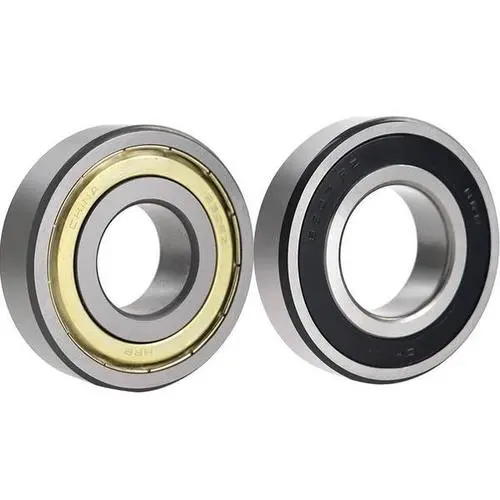According to the rotation of the load acting on the bearing relative to the ring, there are three kinds of loads that the rolling bearing ring bears: local load, cyclic load, and swing load. Usually, the cyclic load (rotation load) and the swing load use a tight fit; except for special requirements for local loads, it is generally not suitable to use a tight fit. When the rolling bearing ring is subjected to a dynamic load and is a heavy load, the inner and outer rings should adopt an interference fit, but sometimes the outer ring can be slightly loose, and it should be able to move axially in the bearing housing housing hole; when When the bearing ring is subjected to oscillating loads and the load is light, a slightly looser fit than a tight fit can be used.
Load size
The interference between the bearing ring and the shaft or housing hole depends on the size of the load. When the load is heavier, a larger interference fit is used; when the load is light, a smaller interference fit is used. Generally, when the radial load P is less than 0.07C, it is a light load, when P is greater than 0.07C and equal to or less than 0.15C, it is a normal load, and when P is greater than 0.15C, it is a heavy load (C is the rated dynamic load of the bearing).
Operating temperature
When the bearing is running, the temperature of the ferrule is often higher than the temperature of the adjacent parts. Therefore, the inner ring of the bearing may become loose with the shaft due to thermal expansion, and the outer ring may affect the axial movement of the bearing in the housing hole due to thermal expansion. When choosing the fit, the temperature difference and expansion and contraction of the bearing device should be taken into account. When the temperature difference is large, the fit interference between the shaft and the inner ring should be larger.
Rotation accuracy
When the bearing has higher rotational accuracy requirements, in order to eliminate the influence of elastic deformation and vibration, the use of clearance fit should be avoided.
Structure and material of bearing housing bore
For the formal housing hole, it is not advisable to use an interference fit when mating with the bearing outer ring, and the outer ring should not be rotated in the housing hole. For bearings mounted on thin-wall, light-metal, or hollow shafts, a tighter fit should be used than for thick-wall, cast-iron, or solid shafts.
Easy installation and disassembly
For heavy machinery, loose fit should be used for bearings. When a tight fit is required, a separable bearing, a tapered bore in the inner ring and a bearing with an adapter sleeve or a withdrawal sleeve can be selected.
Axial displacement of bearing
During the fit, when a ring of the bearing is required to be able to move axially during operation, the outer ring of the bearing and the housing hole of the bearing housing should adopt a loose fit.
Choice of fit
The matching between the bearing and the shaft adopts the base hole system, and the matching with the housing adopts the base shaft system. The fit between the bearing and the shaft is different from the tolerance fit system used in the machine manufacturing industry. The tolerance zone of the inner diameter of the bearing is mostly below the change. Therefore, under the conditions of the same fit, the fit ratio of the inner diameter of the bearing and the shaft is usually tighter. . Although the tolerance zone of the outer diameter of the bearing and the tolerance zone of the base shaft system are both below the zero line, their values are not the same as the general tolerance system.
Post time: Apr-12-2022


